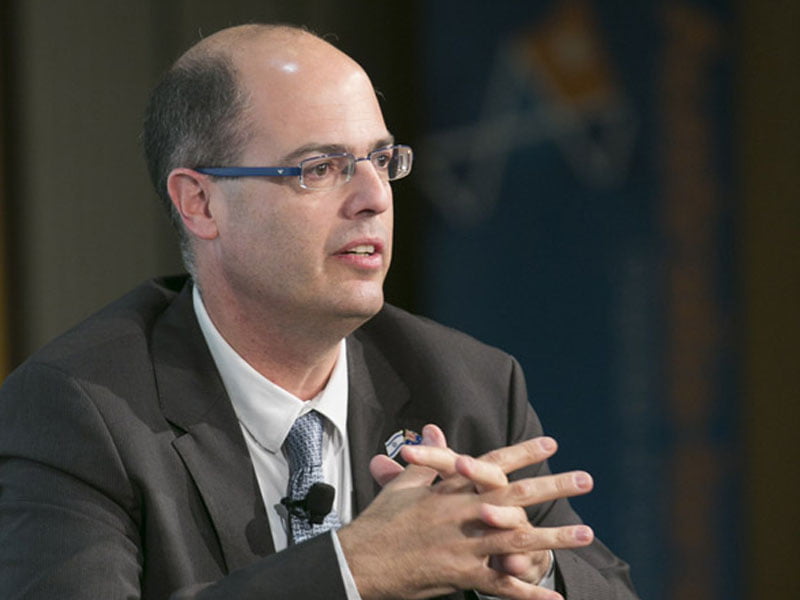The Office of the Chief Scientist inside Israel’s Ministry for the Economy is responsible for the execution of government policy in support of industrial research and development. Given Israel’s status as the world’s exemplar ‘Startup Nation’, it is no surprise that Australian policymakers rolled-out the red carpet for Mr Avi Hasson’s visit last week.
There are lots of moving parts in any innovation ecosystem, but in Israel, Mr Hasson’s is a central, fundamental component. He was in Australia to talk-up the collaboration prospects for the Australia-Israel relationship.

And he was here because the Australian Government wanted to pick his brains. It is worth noting – without comment – the list of people Mr Hasson met with during his time in Australia, as it paints a picture all of its own.
• Malcolm Turnbull, Prime Minister
• Mike Baird, Premier NSW
• Julie Bishop, Foreign Minister
• Christopher Pyne, Industry Minister
• Andrew Robb, Trade Minister
• Wyatt Roy, Assistant Minister for Innovation
• Alan Finkel, Chief Scientist of Australia
• Bill Ferris, Chairman Innovation Australia, Co-chair CHAMP Private Equity
• Andy Penn, CEO Telstra
• Kate McKenzie, Group Managing Director Telstra
• Vish Nandlall, CTO Telstra
• Paul Bassat, Founder SquarePeg Capital
• Innes Willox, CEO Australian Industry Group
This is an incomplete list, compiled on the back of an envelope. But if anyone was still wondering whether the Australian Government had really put the innovation sector at the top of the agenda, its fair to say this list provides an answer.
Mr Hasson also addressed a defence innovation committee of the Commonwealth, as well as senior industry leaders like Alex Scandurra from FinTech hub Stone & Chalk, and Doron Ben-Meir the former Commercialisation Australia CEO and now Melbourne University commercialisation tsar.
Speaking at an Australia-Israel Chamber of Commerce luncheon in Sydney last Friday to wrap up a busy week, Mr Hasson said “connectivity” between the various parts of an innovation ecosystem was critical to the success of the whole.
But that connectivity requires “a vision” to start people talking to each other, and to encourage the mashing up of ideas and projects and collaborations.
To this extent, Mr Hasson says Australia seems headed in the right direction. Compared to five years ago, the grass-roots are much more active, and there is growing momentum.
While innovative ideas are up to the researchers and the entrepreneurs, “the government still has a role to play.”
“An ecosystem needs a vision. It doesn’t just develop all by itself,” Mr Hasson said. “Your government gets it. There is an understanding and a commitment to making it happen.”
“Execution is now the key. But this is not a six-month journey, or a one-year journey … it is going to take a while for things to really develop.”
Nor will it take the 20 years since Israel started down this path either to get to a similar level of ecosystem success. Mr Hasson said there is good momentum here, and Australia is not starting from the same base.
Australia has some competitive advantages that are worth noting. Primarily this is in the existing strength of Australian research and its local institutions – providing a strong base from which commercial enterprise can develop.
The proximity to Asia is also an interesting one – the time-zone advantages and the existing engagement with Asia through the scale of tertiary student enrolments. This is important.
But equally, Australian institutions – and private sector collaborators – should also be looking to the region for technology. This is especially important in relation to research collaboration.
“Don’t just think of them (Asian markets) as target markets. These are also important sources of innovation and technology,” he said.
Assistant Minister for Innovation Wyatt Roy was on hand to talk up government’s soon to be announced Innovation Statement. He said the statement would give some shape to the on-going discussion about the sector, and – Cabinet approval notwithstanding – says the ecosystem should look forward to an early Christmas.
A big focus of the Innovation Statement would be around access to capital, and driving better commercial outcomes for Australia’s excellent research.
“There are some very big policy levers that we can pull to make sure that more money is invested into innovation in this country,” Mr Roy said. The pool of investment funds is deep, but not as much as government would like currently makes it to higher-risk innovation investments. He wants to change that.
But the Government as a user of technology – as an exemplar of digital innovation and transformation – is a key to Australia becoming a more innovative economy.
“We can’t reasonably say to the Australian people that we want you to be more innovative, that we want you to be entrepreneurs [if we aren’t also] being disruptive in the government context,” Mr Roy said.
“We need to be able to take more risks [in government] and to do things differently,” he said.
Do you know more? Contact James Riley via Email.

